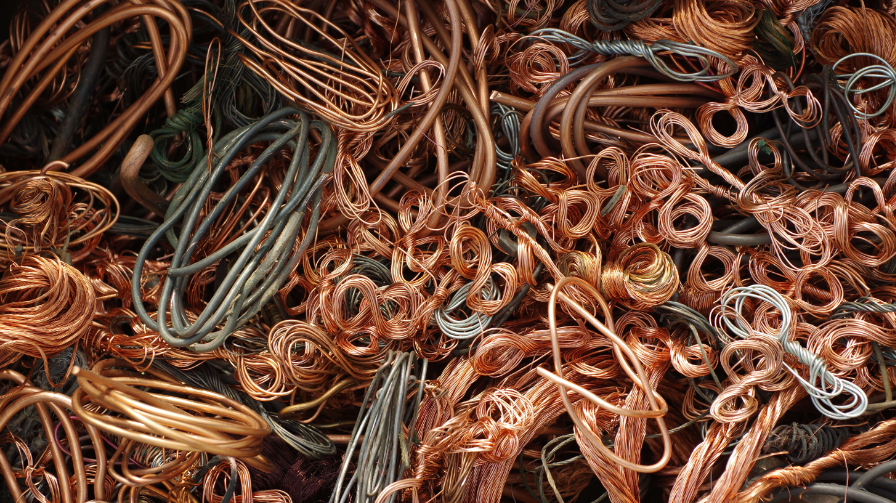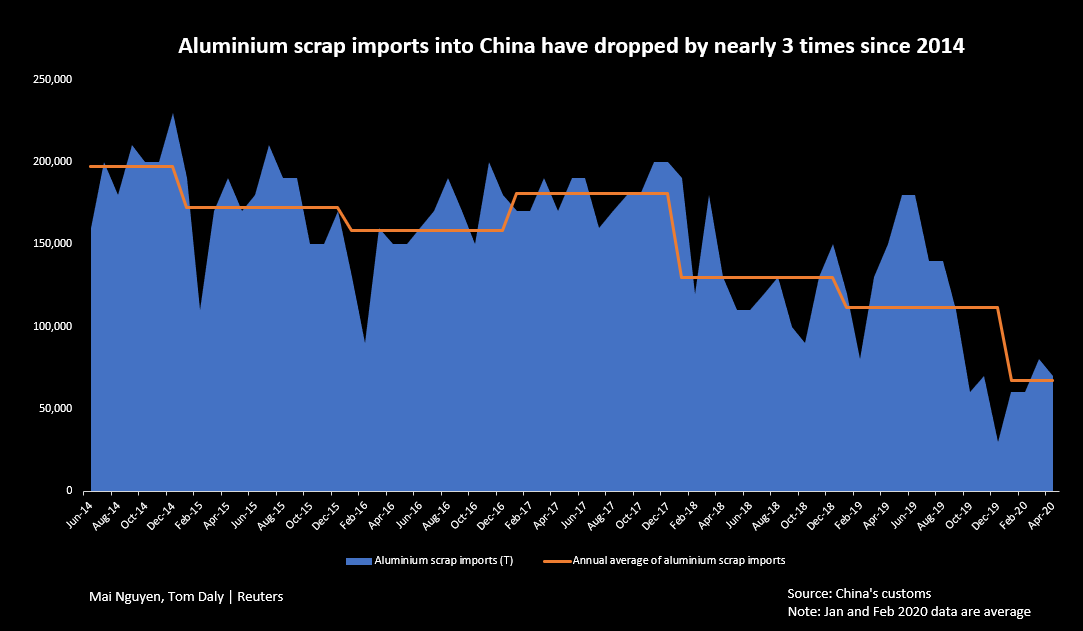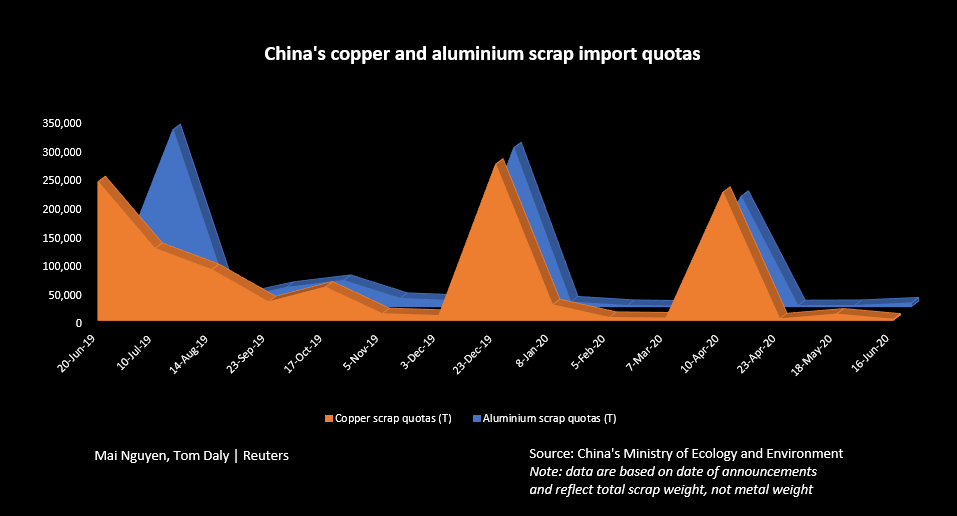China confusion leaves scrap metal stranded overseas

China is dragging its feet in releasing new codes governing high-grade copper and aluminum scrap imports, leaving scrap metal firms abroad confused and without a clear way into their key market.
Top metals consumer China has carried out an environmental campaign against foreign garbage in recent years, progressively restricting scrap inflows and planning a ban on all solid waste imports by the end of 2020.
The State Administration for Market Regulation (SAMR) published new standards for “recycled” copper and aluminum in January after the metals industry successfully lobbied for high-grade scrap to be reclassified as a resource instead of waste – meaning it will not be affected by the ban.
But only days before the new system is due to take effect on July 1, China has not released the customs codes for the materials, leaving foreign and Chinese firms abroad unable to send cargoes and denying China’s manufacturing sector a key source of supply.
“The current situation – without the necessary coordination of all regulators and procedures yet fully established – is a confused fiasco,” said Michael Lion, former Asia chairman of Sims Metal Management.
The reclassification gives some solace to scrap traders after a long-running decline in Chinese imports. Arrivals of copper scrap into China plunged 38.4% and those of aluminum scrap fell 10.9% last year after the country further tightened restrictions on scrap metal from July 2019.

Fabricators use copper scrap to make copper products like wire rods and copper smelters use it to make refined copper.
Aluminum scrap, often in the form of used beverage cans, can be melted down into brick-shaped aluminum ingots, which are then processed into aluminum products used in everything from aeroplanes to cars.

Nowhere to go
Manson Zeng, who runs the CRA Recycling International trading platform in China, estimates there is currently 50-100% more scrap metal than usual sitting in yards in countries such as Malaysia, Thailand, Japan, the Philippines and Indonesia, ready for easy shipment to China from July 1.
The companies which prepared in advance for the new Chinese system – by bringing scrap to nearby countries and ensuring it meets the new standards – will either have to remain patient or find another market to sell to.
Budding suppliers and buyers of the new-standard material must first wait for the codes to come out, said Wang Jiwei, secretary general of the China Nonferrous Metals Industry Association’s recycling branch (CMRA). Without the codes, the material cannot be transported or clear customs.
“Otherwise you will not be able to sign a contract,” he said.
It remained unclear who would be releasing the codes.
When contacted by Reuters, China’s General Administration of Customs referred questions to the Ministry of Ecology and Environment, which said customs and the SAMR were taking the lead on the new system.
The SAMR did not respond to a faxed request for comment.
Insufficient quotas
While qualified companies in China can still import scrap material through quotas periodically issued by the environment ministry, Lion said these would be insufficient to meet lofty Chinese demand particularly for copper scrap.

Firms are having to come up with alternatives. Two aluminum scrap suppliers with stock in Malaysia said they could melt their scrap into secondary ingots which can still get into China, with one saying he could sell domestically instead.
CRA’s Zeng expects the new system to be postponed until the end of the year.
(By Tom Daly and Mai Nguyen; Editing by Ana Nicolaci da Costa)
{{ commodity.name }}
{{ post.title }}
{{ post.date }}

Comments